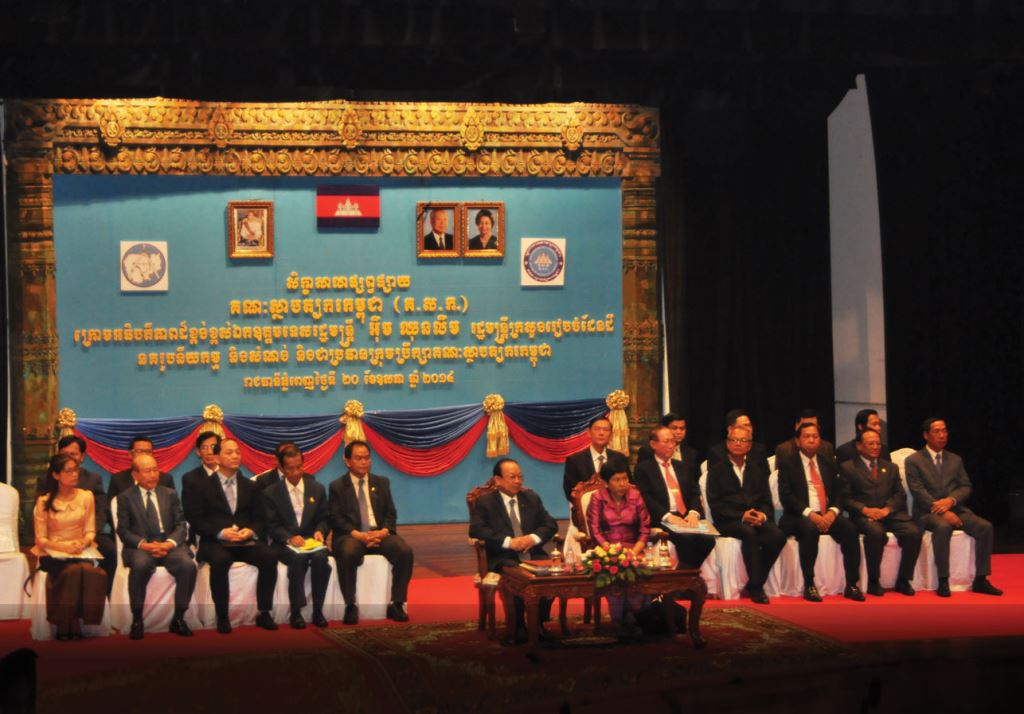In Cambodia, any architect wishing to be fully recognized by the government needs to register with the Board of Architects of Cambodia (BAC), a state-run association established in 2011 and recognized as a member of the ASEAN Architect Council in 2012.
The BAC aims to group and manage registered architects, ensure their levels of professionalism, protect the practice of architecture in the Kingdom, and bring them in harmony with the ASEAN construction market.
“Registering architects is an important task for us to know about the number and quality of our intellectual architectural resources to better respond to our economic and social needs, as well as to have an idea on where we need to develop,” H.E. Im Chhun Lim, Minister of Land Management, Urban Planning and Construction and BAC President, said at an talk organized on May 20 to introduce the association to the public.
Architects registered with the BAC will enjoy various benefits including receiving the title of 'National Architect.' They will receive local and regional training opportunities and be plugged into growing local and international networks.
Those architects recognized by BAC as 'National Architects' will be later be recognized as official ASEAN architects, meaning they can work anywhere within the ten-member bloc. This stipulation is part of the Mutual Recognition Arrangement in the architectural field signed by ASEAN governments in 2007.
The BAC can also protect intellectual property rights. Besides registering themselves, architects can register their work with the association to gain legal protection against plagiarism.
“After you [architects] have registered your masterpieces with the BAC, if anyone copies your entire work, you can file a complaint and we will take legal action,” said Tous Saphoeung, BAC Deputy Secretary General and Dean of the Architect and Urbanism program at Paññ?s?stra University of Cambodia.
But registration with the association doesn’t mean the title of 'National Architect' is automatically bestowed. It takes around two additional months for architects to be screen regarding their abilities, experience and overall quality of their work to them to be recognized as a 'national architect.' After such recognition is given, it is valid for three years.
According to Saphoeung, the BAC is not meant to be a hurdle for foreign architects intending to work in Cambodia. "The BAC doesn’t restrict foreign architects in Cambodia, but there are requirements set by the Ministry of Land Management Urban Planning and Construction that apply to them.”
If foreign architects want to work here, they need to learn the local language, Khmer architecture and Cambodian laws, he said.

Responding to the repeated worries mentioned by local architects that they might lose work after ASEAN economic integration at the end of 2015, H.E. Pen Sophal, Secretary of State, Ministry of Land Management, Urban Planning and Construction, said he thought the opposite. He said he believes Cambodian architects will have the opportunity to win jobs in ASEAN due to their cheaper labor costs in Cambodia compared to other ASEAN member states. “With US$600 to US$1200, we can hire a good designer here, but in other countries, they can’t,” he said.
According to the ministry, eight schools in Cambodia offer architectural studies and there are 3,259 students in the field.
Besides the BAC, another group exists, the Cambodia Society of Architects (CSA). It was established in 2012 with about 50 member firms. It operates as an NGO and has goals similar to the BCA.
At present, Cambodia has the Board of Engineers Cambodia, the Cambodia Constructors Association and the BAC that are linking with ASEAN’s construction-related bodies to harmonize skills within the region’s construction industry.
Source: www.construction-property.com

